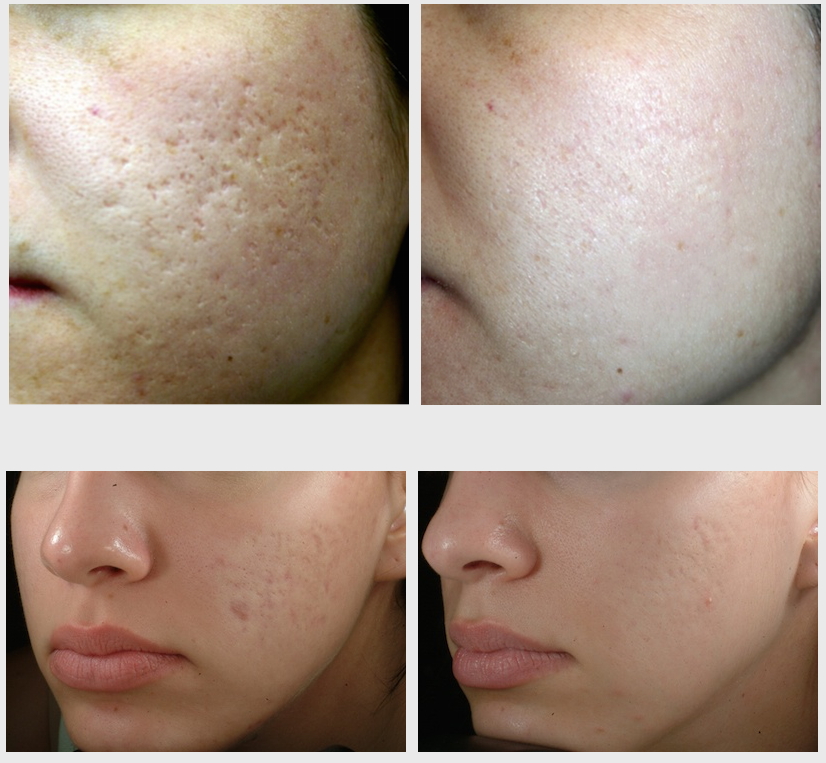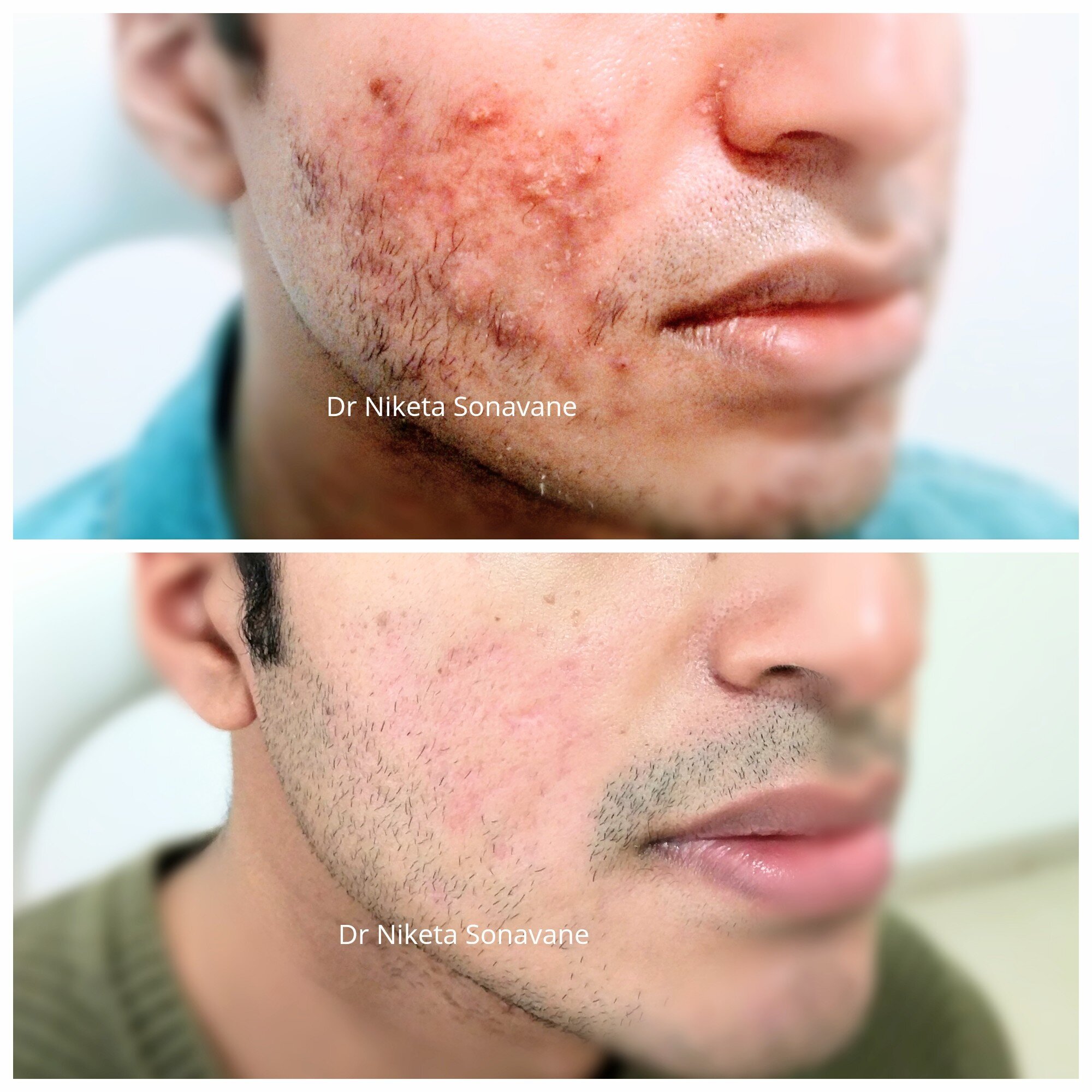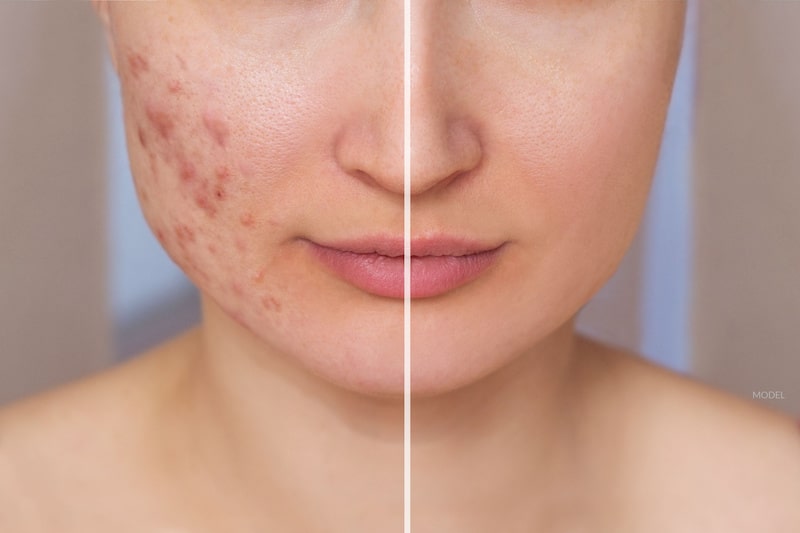How to Deal With Acne Scars: Proven Approaches for a Flawless Skin tone
Recognizing the Numerous Skin Problems and Efficient Treatment Options for Acne Scars
Acne scars represent an intricate interplay of skin problems that substantially impact individuals' self-esteem and overall skin wellness. Comprehending the distinct sorts of acne scars-- hypertrophic and atrophic-- alongside their underlying reasons, is crucial for determining effective therapy techniques. Different restorative alternatives exist, ranging from advanced skin-related procedures to natural treatments. The effectiveness of these therapies often pivots on customized evaluations by qualified experts. As we discover the landscape of acne scar administration, it comes to be noticeable that the journey towards clearer skin may involve even more than just topical options.
Types of Acne Marks

On the other hand, hypertrophic scars arise from an overproduction of collagen during the recovery procedure, leading to increased locations on the skin. These marks are usually solid and can differ in color, sometimes showing up red or darker than the surrounding skin.
Understanding these sorts of acne marks is important for developing an efficient therapy strategy - acne treatment for sensitive skin. Options might consist of chemical peels, laser treatment, microneedling, or dermal fillers, tailored to the details mark type. A thorough assessment with a skin specialist can help identify one of the most suitable treatment, thinking about the person's skin type, mark seriousness, and total skin health
Sources Of Acne Scarring
Scarring occurs as an outcome of the body's natural recovery response to inflammation and injury brought on by acne lesions. When acne kinds, it causes an inflammatory feedback, leading to the release of various cytokines and growth aspects that advertise recovery. This procedure can occasionally lead to excessive tissue development or inadequate repair work, resulting in marks.
The key sources of acne scarring consist of the seriousness of the acne itself, duration of the sores, and specific skin kinds. Extreme inflammatory acne, such as blemishes and cysts, is a lot more most likely to cause scarring as a result of deeper tissue damages. Furthermore, improper handling of acne sores, such as selecting or squeezing, can aggravate cells injury and inflammation, raising the probability of scarring.
Genetic proneness also plays a substantial role; individuals with a household background of scarring are at a greater risk. Additionally, skin type and shade can affect mark formation, as darker complexion might experience post-inflammatory hyperpigmentation, while lighter skin might develop atrophic marks.
Eventually, understanding these reasons is necessary in taking care of acne and mitigating the possibility for scarring.

Therapy Options for Scarring
Effective therapy options for acne scarring differ relying on the kind and severity of the marks. Generally classified into atrophic, hypertrophic, and keloid marks, these conditions need customized approaches for optimum outcomes.
For atrophic marks, which are defined by a loss of tissue, therapies such as chemical peels, microdermabrasion, and laser treatment are commonly used. These approaches advertise skin renewal and promote collagen production, consequently boosting skin appearance. Subcision, a minimally intrusive procedure, can also work by separating coarse bands below the skin.
Keloid and hypertrophic marks can be much more challenging to deal with. Choices consist of corticosteroid injections to lower swelling and squash the scars. In some situations, cryotherapy or laser treatment might be recommended to minimize their appearance.
Surgical options are readily available for extreme scarring, where excision or skin grafting may be required. It's crucial for individuals to consult with a skin doctor to evaluate their details mark type and discuss one of the most suitable therapy plan. Integrating numerous treatments usually yields the very best outcomes, guaranteeing that each individual's one-of-a-kind skin problem is attended to properly.
Natural Home Remedy and All-natural Solutions
All-natural solutions and natural home remedy can supply an easily accessible strategy for individuals seeking to enhance the look of acne marks (acne scars treatment). Different active ingredients located in the home kitchen have actually demonstrated prospective benefits in improving skin texture and advertising healing

Another efficient choice is lemon juice, which serves as a natural exfoliant and can lighten hyperpigmentation. Nevertheless, it needs to be used cautiously, as it may create photosensitivity. Oat meal masks are additionally valuable; their mild peeling can assist eliminate dead skin cells while comforting irritability.
Necessary oils, such as tea tree oil and lavender oil, can better sustain mark recovery due to their antimicrobial buildings. It is essential to execute a patch examination prior to using any remedy to guarantee there are no unfavorable responses. These natural remedies can be a corresponding important site method in the journey to reduce acne scars.
Stopping Future Scarring
Adopting a proactive approach to skincare can considerably minimize the danger of creating future acne marks. Normal cleaning, peeling, and hydration can assist preserve skin wellness and protect against blocked pores.
In addition, avoiding the lure to press or choose acne lesions is crucial, as this can lead to swelling and succeeding scarring. Rather, people need to concentrate on applying topical treatments that promote healing and minimize inflammation. Active ingredients such as salicylic acid, benzoyl peroxide, and retinoids are recognized for their efficacy in managing acne and minimizing marks.
Sun security is one more essential element; direct exposure to UV rays can restrain and darken marks recovery. Consequently, using a broad-spectrum sun block daily can reduce these results - acne treatment for sensitive skin.
Finally, preserving a healthy and balanced diet plan abundant in antioxidants and staying hydrated assistances skin regeneration. By applying these preventive measures, individuals can considerably decrease their threat of future scarring and advertise overall skin health and wellness.
Final Thought
To conclude, a comprehensive understanding of acne scars, encompassing both atrophic and hypertrophic types, is necessary for reliable therapy strategies. Customized interventions, consisting of professional therapies and home treatments, can dramatically boost skin look and structure. Safety nets also play a vital role straight from the source in minimizing future scarring. Consultation with a dermatologist continues to be crucial to develop customized methods that consider private skin types and mark severity, eventually improving the efficacy of scar monitoring methods.
Acne scars represent an intricate interplay of skin conditions that dramatically effect people' self-confidence and total skin health and wellness. The two main groups of acne scars are hypertrophic and atrophic scars. These marks are additional categorized right into 3 subtypes: ice choice marks, which are slim and deep; boxcar scars, which are wider and have distinct edges; and rolling click over here now marks, which create a wave-like appearance due to irregular skin appearance.
A comprehensive assessment with a skin specialist can assist determine the most suitable treatment, taking into account the person's skin type, mark intensity, and overall skin wellness.
Consultation with a skin doctor remains crucial to develop personalized techniques that think about private skin kinds and scar extent, inevitably improving the efficacy of mark management strategies.